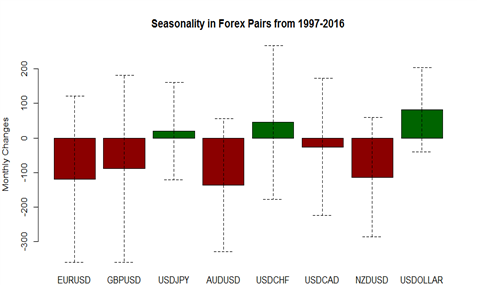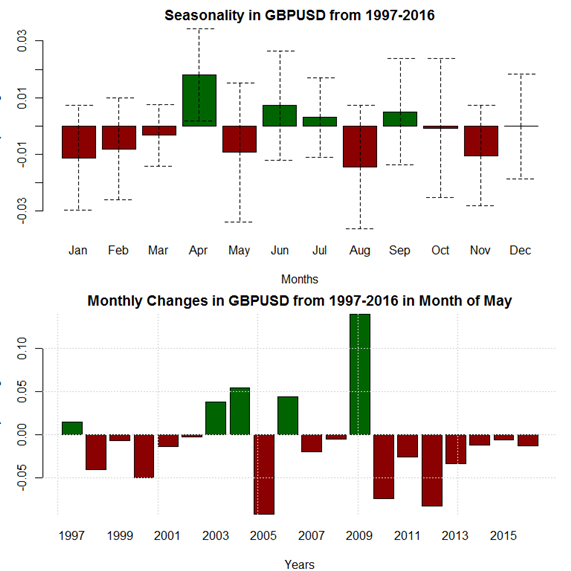The beginning of the month warrants a review of the seasonal patterns that have influenced forex markets over the past several years. For May, as we did for all of 2016 and thus far in 2017, we have expanded our focus on the period of 1997 to 2016 in recognition of the evolving relationship between economic data, central banks, and financial markets.
The longer observation period captures several crisis events/periods that traders may find analogous to events unfolding today, even as the ramifications from Brexit are unclear: the Asian crisis; the US tech bubble; the US housing bubble; the global commodity bubble; and previous rate hiking and rate cutting cycles, from the major central banks, during times normal (pre-2008) or extraordinary (post-2008). By increasing the sample size to 20 years, we believe the statistical stability of the estimates will have increased relative to utilizing a shorter time-frame/smaller sample size.

Forex Seasonality in Euro (via EURUSD)

May is a bearish month for EUR/USD, from a seasonality perspective. It is the second-worst month of the year for the pair. EUR/USD has declined 60% of the time in May over the past 20-years, and its average performance was -95-pips per month. EUR/USD has lost ground in May each year starting in 2010.
Forex Seasonality in British Pound (via GBPUSD)

May is a bearish month for GBP/USD, from a seasonality perspective, due to its consistent performance metrics. The pair has depreciated 75% of the time in May over the past 20-years, and its average performance during this time frame was -92-pips per month. GBP/USD has lost ground in every May since 2010.
Forex Seasonality in Japanese Yen (via USDJPY)

April is a neutral month for USD/JPY, from a seasonality perspective, due to its flat performance metrics. The pair has split time equally between gains and losses over the past 20-years, and its average performance during this time frame was a mere -6-pips per month. USD/JPY has appreciated in May in three of the past four years, with its second- and third-best Mays over the past 20-years coming in 2015 and 2016, respectively.

